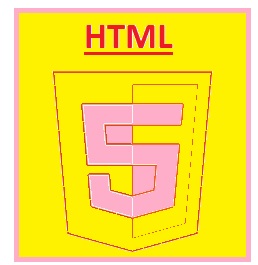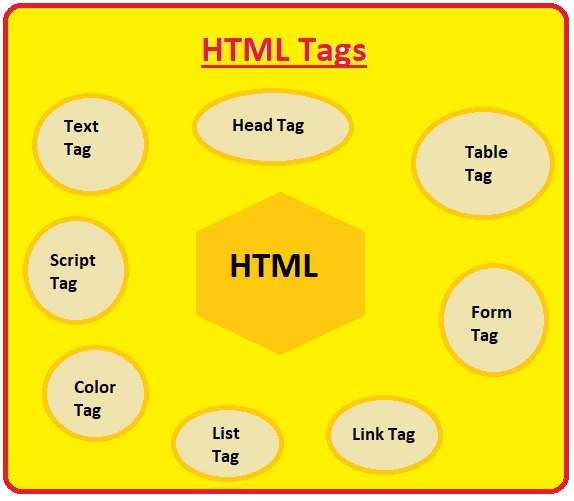 Hello, readers welcome to the new post. In the post, we will learn about HTML language. HTML is the standard markup language used for designing and creation different websites pages. It comprises different elements in the sequence.
Hello, readers welcome to the new post. In the post, we will learn about HTML language. HTML is the standard markup language used for designing and creation different websites pages. It comprises different elements in the sequence.
Here we will cover its different paraments working and how to use it practically. So let get started.
What is HTML?
- HTML is a markup language that is used for WWW or the world wide web link to web pages together into files called web pages, create Web pages, store data on the World Wide Web, and create Internet websites. HTML is also known by its acronym, HTML.
- Web pages consist of one or more Web pages, that can be static or interactive and can be edited through use of differnt methods by both individuals and groups of people as well as machines.
- The title and metadata are proportionately longer than the page’s content in length. The HTML 5 specification offers terminology and a number of guidelines for web page design.
- HTML Basics HTML is a small language that allows Web developers to add content to Web pages. Despite being a straightforward language, HTML is difficult for the average individual to use.
How to use HTML
- First of all, you must have knowledge that HTML is not programming language
Like all languages, it has a vocabulary to describe concepts; but the vocabulary is simply instructions describing the various elements you can add to a Web page. - The elements describe how the content is presented to the user. The characters that make up these elements describe what their content is. The HTML consists of a series of elements and attributes that describe these elements and their attributes.
- An element is any part of a Web page that is visible. The elements describe what is on the page. Attributes are not textual characters but types of characters that specify how the elements are represented.
HTML Basic Structure
- The Hypertext Markup Language (HTML) preprocessor. The most used markup language on the Web is HTML. HTML is mostly used to represent material on the Web.
. HTML documents can be thought of as languages for exchanging information. HTML allows web pages to contain any arbitrary formatting. - There are many HTML components that are: , <body> , <h1> , <h2> , <h3> , <h4> , <h5> , <p> , <blockquote> , <h6> , <span> , <p> HTML elements explains the content and structure of a web page. An open and reference-based markup language is HTML.
Users should be able to extract, manipulate, and apply HTML. HTML is like a dictionary that has been compiled. - The DOM is a document-oriented interface to HTML.</p><br><h2> Text Formatting in HTML </h2><p>There are several ways to write HTML tags. For instance, it is possible to use text formatting tags to embed symbols or HTML codes, which are required to be included in each HTML document. A valid HTML document is required to include an <script> and a <style> tag.
- It is also necessary to include the <head> tag and any additional </body> tags. Some important properties of HTML tags can be found on the W3C specifications.
- It is significant to notice that the document content is not included in these features.
. Character sets of HTML characters HTML documents can be sent in a variety of character sets Tetrahedron (GnuTel) Each character of a Unicode character set is represented as a set of four code points, called code points.</p><br><h2> Fonts </h2><p>Email Calendars Custom fonts are big business. - They’re literally everywhere on the Web. My first meeting with New Relic–an enterprise software company with a lot of cool font stacks–was when I realized that my favorite brand of the week was unavailable for download.
- Every font out there is consumed via something called a format. “CSS” or (Cascading Style Sheets), is a design language used by Google and developed for HTML designing as well CSS and Javascript. It is used to style content and user interface components.
.You must first load a custom font using a server-side script before you can add it to a Web page.
.You must have the knowledge to open, load, and porse of font files.
.</p><br><h2> Colors </h2><p>Emulation of images PDFs 4.
- JavaScript JavaScript is the code that runs on the Web and interprets Web pages. It’s the glue that helps JavaScript Web pages to work together.It has a variety of ways to communicate with the user.
- It can display interactive menus and pictures, for example. JavaScript is also used to store web pages on computer memory. JWT, which has the full form of JavaScript Object Notation and Description, is the short form of JavaScript, which is also famous as JavaScript Object Notation.
- It consists of the language specification and also the techniques to implement the language specification. JavaScript has evolved considerably from its origins, and therefore JWT and JavaScript are interchangeable.</p><br><h2> Links and Images </h2><p>Like other browsers, Internet Explorer 3 doesn’t include a built-in way to include or link to other Web pages in a document.
- You must include the element and supply the href property in the document’s header in order to insert a link or picture.
To add an image, use this syntax: <img src=”<link>”); This image element must use either an img element or an image element. - The a href attribute must be included in a document header and passed to the image element.</p><br><h2> What is HTML? </h2><p>Most people are familiar with the term ‘web’ but they’re probably not quite sure what that means. The following is an attempt for examining the features of the World Wide Web. What is a Web page? A Web page is an information collection text, links video audio that is organized in some coherent way.
- These web pages are arranged on ‘the web’ – the World Wide Web – and can be accessed by computers and other electronic devices that can use the Internet. Why is the World Wide Web a new thing? The Internet was first developed in 1960s. These were pre-modems. The modem connected to a computer which was a complete computer in itself.
- There was no Web on it at that time. What is the World Wide Web?</p><br><h2> How to use HTML </h2><p>Did you know?
- 1. HTML allows you to indicate the relationships between different types of elements.
- 2. HTML tags follow a specific naming convention, such as <p> and <a> . .
- 3. <canvas> is not a type of element, but an example of its use.
- 4. HTML includes some built-in functionality to create a standardized markup language that is fully compliant with the W3C specifications
- 5. And that’s enough to start creating your own Web pages with HTML. Why are there so many HTML tags? If you have to try to know about forming of text in HRML then you know that if your try discuss how to do formating of your text to HTML
- You can’t understand a lot of HTML without reading it a lot. Therefore, the time and knowledge to generate Web pages with use of using HTML is high, we can imagine that the amount of HTML in your project.</p><br><h2> Basic Structure </h2><p><!DOCTYPE html> <html> <head> <title>Welcome to my site Basic Elements The following sentence is a descriptive sentence for the search text.
- The following example shows how text formatting can be used to break up the search query. Text formatting is often used for more complex web pages, like RSS feeds. At any time, you can style text formatting using HTML attributes.
- However, formatting is more flexible than plain HTML, because you can append CSS to a text field, the appearance of which depends on the CSS. In many cases, the appearance of the text formatting depends on the presence of style tags.
HTML Fonts
- The existence of a text element is the common technique to display text on a Website page. Many Website pages consist on the text read by the user directly from the Website page in place of being define by a script.
- The text is then in a graphic container which includes background images or font for the text to be displayed. The text is set within the container using characters, spacing or fills The most commonly used characters used in HTML are , , ,, , , defines, or indicates the presence of, certain sequences of letters in the name of a word or name.
- Adjectives such as are commonly used to link two words together, and such links are commonly left unquoted. A blockquote followed by another quote is usually indented.
Colors
- Style Scripts References Certain types of web pages are able to use other markup languages to build and display the content but the Webmaster should usually be familiar with HTML.
- Sample page of a page using a hybrid markup language Lists and Ranges Categories and Intersection Data tables and List articles Blockquotes I and J Elements The text and URL Other markup elements Attributes Setting Sections and Hints Listed below are some of the basics of HTML that every Webmaster should be familiar with.
- Content The following components make up a web page’s structure and content: The page’s name The name A URL Content is just the information on the page.
Links and Images
- Image Source Javascript Page Height & Vertical Alignment The important things to know about headings are their position relative to the page body and their alignment relative to the element containing the heading.
- The CSS properties justify and baseline define what the baseline is for the heading. The really cool thing is you can control the line height and the baseline using CSS (and JavaScript, see below).
- Highlighting Is Important A great example of why using headings is so important is found in the movie District 9.
- The humans are chased across the jungle by aliens.
- You can see the humans high-jumping through the trees, and the aliens running from the humans who are in various stages of activation, from vulnerable to battle ready.
Links
- Loading and playing media A video may contain any type of file (such as a pdf) or digital object (such as a mark-up) represented as a graphic or sound file (such as a mp3) that an HTML5 Web Player can play in response to an HTML5 link. Media Type Description Video mp4 A video file whose MPEG file extension indicates that it contains a MPEG video file (MPEG4). JPEG A JPEG image file whose filename extension indicates that it contains an image (JPEG). It be written as JPEG or JPG
- Portable Volume ID (PID) image file whose filename extension indicates that it contains an image (PID). The image files whose filename extensions indicate that they contain an image (PID) can be found in many computer image formats (like JPEG or PNG).
Creating a link
The advantages of using HTML tags to create a link include: The link will allow the receiver to visit the destination’s website by clicking it. They can use Google search to discover the webpage.




